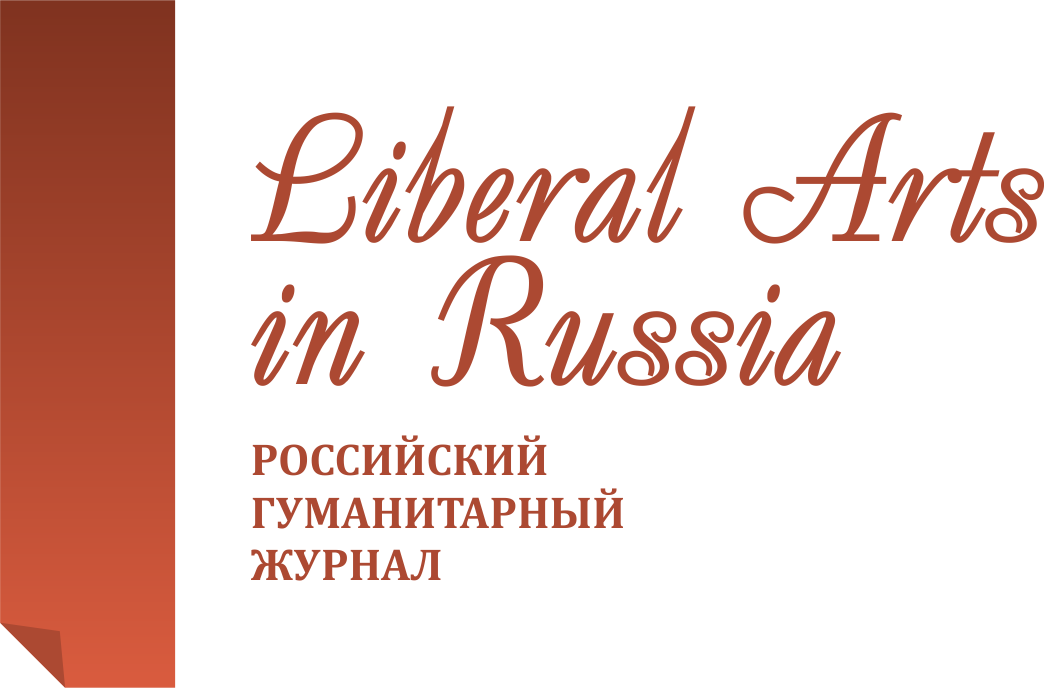Defragmentation of paremiological space in the linguistic picture of the world
Liberal Arts in Russia. 2022. Vol. 11. No. 6. Pp. 453-461.
Get the full text (Russian) Email: salelah12@yandex.ru Abstract
An analysis of transformed paremias is proposed, taking into account the influence of digitalization on human life. The modification of the paremiological picture of the world as an axiological model of the world is noted. The linguistic features of neoparemias actualized in speech as communicative-nominative units include brevity, syntactic isolation, euphony and wholeness, as well as their hidden associative potential - the psychological reality of meanings in the light of relevant information for speakers, including both socially filtered and personal meanings. The associative reactions of the participants in the psycholinguistic experiment, who were asked to come up with a new proverb based on the original part of the well-known proverb, have been studied and classified. The tendency to use the strategy of paremiological variation by increasing new meanings indicates the defragmentation of modern paremiological space, which is a reorganization of information with the aim of structuring it into a continuous sequence. The authors come to the conclusion that the language units obtained as a result of the experiment accumulate specific information about typical life situations and relationships and turn into an effective tool for conceptualizing reality. One of the communicative intentions of a linguistic personality during the defragmentation of paremiospace is the creative possibilities that the linguistic personality implements in strategies for extracting information. The prospects of studies of the paremiological picture of the world in terms of the linguistic picture of the world fragments reconstruction and the national character features actualization are noted.
Keywords
- • defragmentation
- • linguistic picture of the world
- • neoparemia
- • paremia
- • paremiological space
References
- Apresyan Yu. D. Izbrannye trudy. T. 2. Integral'noe opisanie yazyka i sistemnaya leksikografiya [Selected works. Vol. 2. Integral description of the language and system lexicography]. Moscow: Shkola "Yazyki russkoi kul'tury", 1995.
- Gridina T. A. Lingvistika kreativa-3: Kollektivnaya monografiya. Ekaterinburg: UrGPU, 2014. Pp. 14-75.
- Dubrovina K. N. Entsiklopedicheskii slovar' bibleiskikh frazeologizmov [Encyclopedic dictionary of biblical phraseological units]. Moscow: Flinta, 2010.
- Znobishcheva M. I. Smysl poslovitsy "chto poseesh', to i pozhnesh'". URL: https://na-dostupnom.ru/chto-poseesh-to-i-pozhnyosh/.
- Ivanov E. E. Paremiologiya v diskurse: obshchie i prikladnye voprosy paremiologii. Poslovitsa v diskurse i v tekste. Poslovitsa i yazykovaya kartina mira. Moscow: LENAND, 2015. Pp. 48-67.
- Kushnareva A. V. Slavyanskie etnosy, yazyki i kul'tury v sovremennom mire. Ufa, 2021. Pp. 152-158.
- Kushnareva A. V. Russian Linguistic Bulletin. 2022. No. 3(31). URL: https://rulb.org/archive/3-31-2022-july/10.18454/RULB.2022.31.25.
- Maslova V. A. Vvedenie v kognitivnuyu lingvistiku [Introduction to cognitive linguistics]. Moscow: Flinta, 2007.
- Mokienko V. M. Davaite govorit' pravil'no. Poslovitsy v sovremennom russkom yazyke [Let's speak correctly. Proverbs in modern Russian]. Moscow: OLMA Media grupp, 2012.
- Mursalimova Yu. R. Teoreticheskie i prikladnye nauki i obrazovaniya v XXI veke. Tambov, 2012. Pp. 97-103.
- Mursalimova Yu. R. Aktualizatsiya religioznogo komponenta znacheniya slova: dis. ... kand. filol. nauk. Perm', 2018.
- Psikhologiya effektivnoi zhizni. URL: https://psy.systems/glossary/defragmentaciya.
- Salikhova E. A. Modelirovanie protsessov ovladeniya i pol'zovaniya psikhologicheskoi strukturoi znacheniya slova pri bilingvizme [Modeling the processes of mastering and using the psychological structure of the meaning of a word in bilingualism]. Moscow: Nauka-Flinta, 2015.
- Salikhova E. A., Mursalimova Yu. R. Issledovaniya po semantike. Ufa: BashGU, 2021. Pp. 195-203.
- Selezneva L. V., Severskaya O. I. Slovo.ru: baltiiskii aktsent. 2021. Vol. 12. No. 1. Pp. 96-109.
- Semenenko N. N., Krivosheev G. S. Nauchno-metodicheskii elektronnyi zhurnal "Kontsept". 2019. No. 4. URL: http://e-kon-cept.ru/2019/195011.htm.
- Seregina M. A. Mir lingvistiki i kommunikatsii. 2009. Pp. 36-49.
- Ubiiko V. I. Vestnik Orenburgskogo gosudarstvennogo universiteta. Gumanitarnye nauki. 2005. No. 5. Pp. 37-40.
- Shkuran O. V. Uchenye zapiski Petrozavodskogo gosudarstvennogo universiteta. 2020. Vol. 42. No. 7. Pp. 54-63.
- Mieder W. Honig klebt am längsten. Das Anti-Sprichwörterbuch. Wiesbaden: Verlag fur deutsche Sprache, 1985.
- Riede P. Das wissenschaftliche Bibellexikon im Internet. Saat / säen. URL: https://www.bibelwissenschaft.de/stichwort/41731/.
- Wahrig G. Wörterbuch der deutschen Sprache. 6 Aufl. München: KG, 2003.
